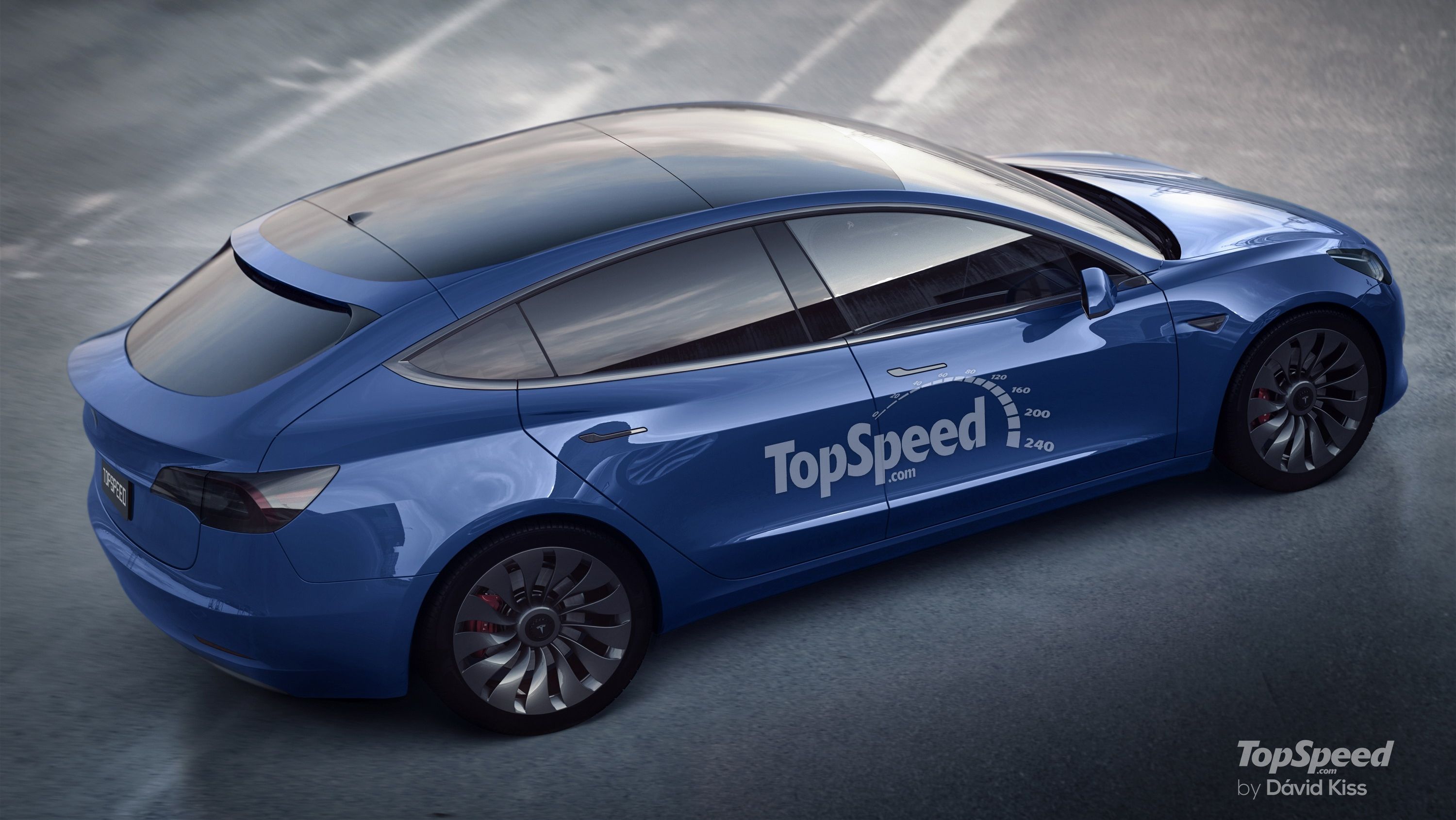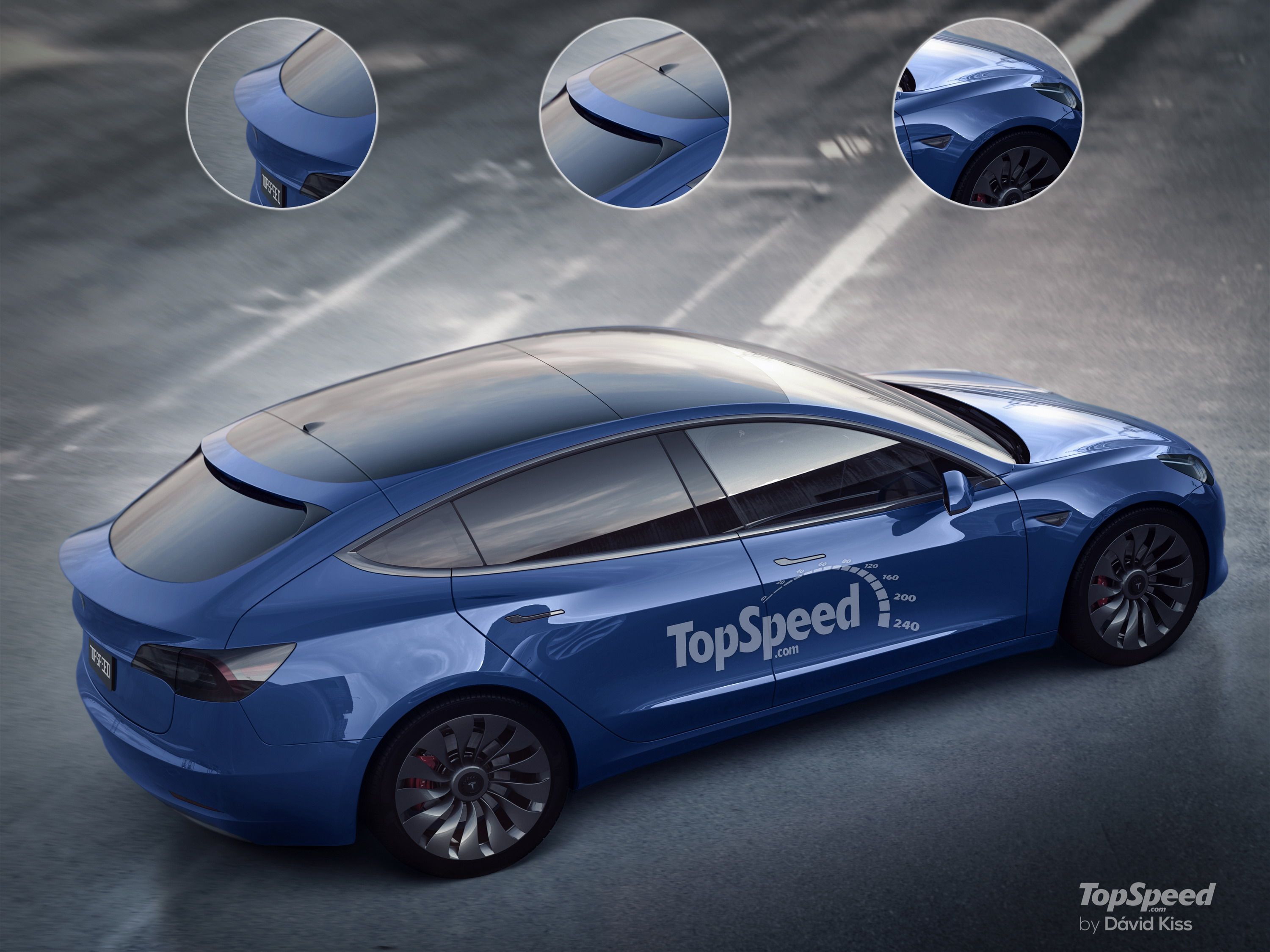In case you’ve been living under a rock with no dependable Wi-Fi for the last month or so, Tesla->ke1842 recently dropped cover on the Model 3 – an entry-level sedan->ke142 with slick styling, solid range, and impressive performance. Unlike Tesla’s other products, the Model S->ke3329 and Model X,->ke4202 the Model 3->ke4892 offers affordability with an eye towards high-volume production, and with nearly 400,000 pre-orders already on the books, it appears as though the California-based automaker hit a grand slam. And that’s good news, especially when you consider how the Model 3 was designed to make significant headway towards the company’s stated goal of bringing all-electric->ke1030 transportation to the masses. But even with widespread critical acclaim and record pre-sales, there’s still a long way to go before Elon Musk can unfurl the “Mission Accomplished” banner. Additional body styles will be critical to Tesla’s ongoing success, and might include a more practical hatchback->ke304 variant some time in the future.
In a Tweet, Musk said that the Model 3’s rear roof cross-car support beam was moved to make sure passengers sitting on the rear bench had enough headroom. The result is a small trunk lid, rather than the larger hatch seen on the Model S and Model X. And while the Tesla CEO claims the Model 3 can carry a 7-foot surfboard in the cabin, there are many who feel as though the diminutive cargo space puts a damper on the car’s practicality, leaving the much larger (and hugely more expensive) Model X as the marque’s only real cargo mover. And that’s a problem for a company trying to reach as many consumers as possible.
Fortunately, Tesla has stated it’s looking into a multitude of different body styles, which means a Model 3 Hatchback could very well be in the pipeline.
So then – if the Model 3 was turned into a five-door, what would it bring to the table? Read on for our speculative review.
Continue reading to learn more about the Tesla Model 3 Hatchback.
2019 Tesla Model 3 Hatchback
- Make: Array
- Model: 2019 Tesla Model 3 Hatchback
- [do not use] Vehicle Model: Array
Exterior
Note: Tesla Model 3 sedan pictured here.
The Model 3 already sports a long, coupe-like appearance, so the jump to a full-fledged five-door shouldn’t be too difficult – at least aesthetically speaking. On the engineering side of things, it’s probably a much different story, but when it comes to looks, the hatch should be quite similar to the sedan.
Up front, the nose will be devoid of any grille or intake, given the car doesn’t have the same need for fresh air as something powered by an internal combustion engine. The headlights will draw up into the front fenders, with LEDs used for lighting. LEDs will also be used for the lower daytime running lights, which will appear as strips along the bumper. The whole fascia will be somewhat reminiscent of a Porsche product. The front overhang will also be very short, enhancing the car’s athletic form.
Moving to the sides, we find enormous, distinctively styled rollers filling the wheel wells, with a triangular lamp used to punctuate the fender. The character lines and windows are set at an angle, giving the car an aggressive, raked stance. The door handles are set flush with the sheet metal, reducing drag.
The roofline is where we start to see bigger differences, with the hatch extending outwards at a flatter angle compared to the sedan. The single sheet of glass is now segmented, starting with a trailing roof spoiler mounted to a new cross-car support beam that’s placed higher on the trunk. Moving down into the hatch, we see more aero enhancements, plus taillights that wrap into the rear quarter panels.
While the sedan isn’t necessarily ugly, I feel as thought the Model 3 Hatchback is simply a more natural fit for the smaller Tesla, especially if it means significantly enhanced cargo space. And while the single glass pane running from the windshield to the trunk on the sedan is pretty cool, I think I’d rather be able to fit more stuff in the rear.
Interior
Note: Tesla Model 3 sedan pictured here.
Of course, one of the most important features of a Model 3 Hatchback would have to be an increase in cargo space. The forthcoming Model 3 sedan gets two trunks – one in front, and one in the rear – and a hatchback model would expand on this with more space in back for wider, taller items.
But how much space are we talking about? Well, just look towards a rival EV hatchback for an idea. The Chevy Bolt, for example, offers nearly 17 cubic feet in back, which is a decent amount for a compact vehicle. Expect something similar from Tesla if it hopes to be competitive in this regard. Throw in a foldable rear bench (the Model S already has a 60/40 split), and odds are you’ll be able to fit much more than just a surfboard, if needed.
Fold the seats back up, and you’re looking at seating for up to five passengers, plus enough groceries to feed them all.
In terms of look and layout, the Model 3 Hatchback will have the same cabin as the sedan, with a minimalistic control layout and spacey design. All the traditional buttons, knobs, and switches you’d expect on a car will be replaced by an enormous 15-inch touchscreen mounted to the center console, where the driver and passenger can alter settings for the infotainment system and HVAC, as well as view various drive settings.
One of Tesla’s hallmark features is its Autopilot mode, which offer autonomous and semi-autonomous driving depending on the given situation. Like the Model 3 sedan, I expect the basic Autopilot features (safety stuff like auto brake and lane change assist) to come as standard, while more convenience-oriented features will be optional.
Note: Tesla Model 3 sedan pictured here.0}
Note: Tesla Model 3 sedan pictured here.
I’d expect the Model 3 Hatchback to offer the same drivetrain as its sedan counterpart, but while Tesla happily gave us a look at the Model 3’s exterior and interior design during the big reveal, the specifics on what powers it are still unknown. That said, there are a few obvious conclusions we can draw.
The first is based on the limited information provided during the car’s unveiling late this past March. The base Model 3 will be RWD, offer 215 miles of range, and hit 60 mph in less than 6 seconds. That means it could use a 40-kWh battery and a single electric motor.
Higher spec models will get more power, more speed, and more range thanks to AWD and bigger batteries. We’re thinking a 60-kWh option for the mid-range trim, with 250 miles of range and a run to 60 mph in 5 seconds flat. At the top of the heap will be a 70-kWh dual-drive unit with nearly 300 miles of range and a 0-to-60 mph time in 4 seconds flat.
All models will be compatible with Tesla’s Supercharger network as standard.
Drivetrain
The base Model 3 sedan costs $35,000 before incentives, which means an extra $7,500 from the feds when tax season rolls around, bringing that price down to $27,500. I’d expect almost exactly the same pricing for the hatchback – maybe with an extra couple thousand added to the bottom line. Higher trims, with more power and longer range, will significantly boost the final price tag, with a top-spec Model 3 Hatchback going for roughly $55,000.
Note: Tesla Model 3 sedan pictured here.0}
Chevrolet Bolt
Practical, forward thinking, long-range, and most importantly, scheduled to arrive long before the Model 3 sedan, the Bolt makes for a helluva EV competitor. Chalk it up to the dollars and manpower GM wields, and suddenly, Tesla isn’t quite as impressive as the zealots might think. The Bolt offers a lot of the same goodies, with 200 miles of range per charge and a price tag around $30,000, and even though the Model 3 bests both those numbers, it can’t keep pace in the cargo-space department. What’s more, if Chevy manages to sell enough Bolts, a Model 3 Hatchback might become a necessity.
Read the full review here.
Nissan Leaf
The Leaf has been doing this EV hatchback thing longer than most, first entering production in 2010. Unfortunately, development has been slow on Nissan’s part, and range is currently limited to just 107 miles per charge. However, a significant drivetrain upgrade is expected soon, and with loads of experience in the all-electric market, Nissan knows how to move units. In fact, the Leaf is currently the all-time best-selling highway-capable car in the world, an accolade it looks like it’ll hold on to – at least until Tesla delivers on all those pre-orders.
Read the full review here.
Conclusion
Hatchbacks aren’t necessarily the most popular body style in America, but that doesn’t mean there isn’t a market for them, especially amongst active young buyers who might wanna head to the trails on the weekends with a few mountain bikes in back. Throw in a huge demand for hatchbacks overseas, and a five-door Model 3 is absolutely a possibility.
That said, it’s not likely we’ll see a Model 3 Hatchback any time soon considering how much remains to be done to deliver on existing Model 3 pre-orders. First, the Gigafactory out in Nevada needs to be running at full speed to provide enough batteries for all these Model 3s, while the company’s Supercharger network needs to expand significantly.
Not that Tesla can’t pull it off. This is the make-or-break time for the little Californian EV provider, but given its past successes, I’m optimistic. But beyond this period of growth, expect new models, including the possibility of a Model 3 Hatchback.
Personally, I feel like a hatch should have come before the sedan. Styling is clearly not an issue, and I think the extra room would have clicked with a broader customer base. But then again, 400,000 pre-orders says plenty about Tesla’s ability to sell.
But will that success continue to grow, or stagnate? Only time will tell.




